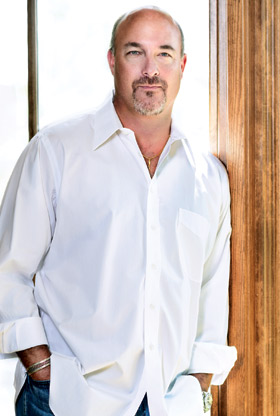
Some are born to it, and others just fall in. For 1st AD Justin Muller it was the former. His grandmother was one of the first women film editors in Italy and his grandfather was head of publicity for MGM Italia. "My mom worked on Cleopatra [as a production secretary] and my dad worked for Orson Welles as a editor," he says, continuing the roll call of family members in the business. "I remember being on the set of Popeye, in Malta, where my dad was working as a production supervisor for Robert Altman, and being in awe of the craft before I even knew what that meant."
Muller, who says the key to success as an AD is thinking on your feet, has had plenty of chances to emulate what he saw as a kid, on sets all around the world.
"Working as a second assistant director on a mini-series for Italian TV, we shot in rural locations in India," he says. "I remember one 3 a.m. call to dress 1,000 extras for a battle scene. Transportation had picked them up from villages around the area, and then mistakenly brought them to another location. This was before cell phones, so my only hope was to approach all of the villagers [in the location town] on their way out to work in the fields. I managed to get 700 extras by sunrise, and we didn’t have to go down for the day."
Muller moved to Hollywood in the early 1990s, but soon found himself back in Europe, working alongside Kenneth Branagh on Much Ado About Nothing and with Franco Zeffirelli on Sparrow, Jane Eyre, and Tea with Mussolini, the latter of which dredged up long-standing anger and hatred from the residents.
"We used local extras in San Gimignano who were old enough to remember the war, and the emotions almost got out of hand," Muller says. Working in southern Italy for Catherine Hardwicke on The Nativity Story, he had to deal with a different mob: a herd of sheep that had to part ways on cue for Joseph and Mary on the hillside."
The stakes were raised even further throughout Muller’s last four years on the popular Twilight franchise. To thwart the intense efforts of paparazzi, he set up a "containment department," which included security guards and production assistants positioned at key access points to the set.
"We had the grip department set up 20 12-foot black flags as barricades at every exterior location," Muller explains. "For the wedding scene [in Breaking Dawn: Part 1], we had to find a location so remote, on private property, that [the paparazzi] would be trespassing. It was next to a river and required a hike of many miles, and l still had to put security in kayaks and boats to camp out on the other side."
Another big challenge was the decision (due to tax incentives) to shoot 60 percent of Breaking Dawn: Part 2 in Baton Rouge. "That meant by the time we got to Vancouver to shoot exterior summer scenes, it was February and there was two feet of snow," says Muller. "I actually had to bring a company to steam clean the sets. We’d give them a frame line, and they’d melt it all away. Then the greens department would come in to reconstruct any kind of [vegetation] in the shot that had been burned away."